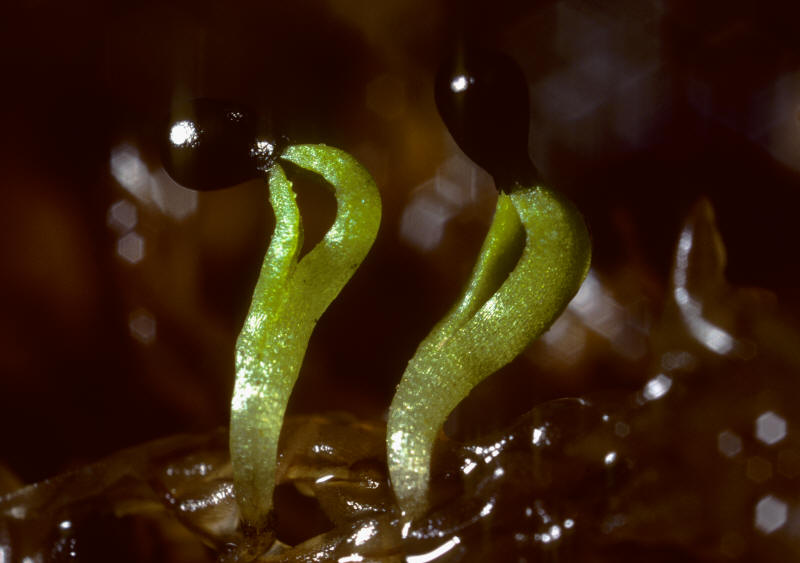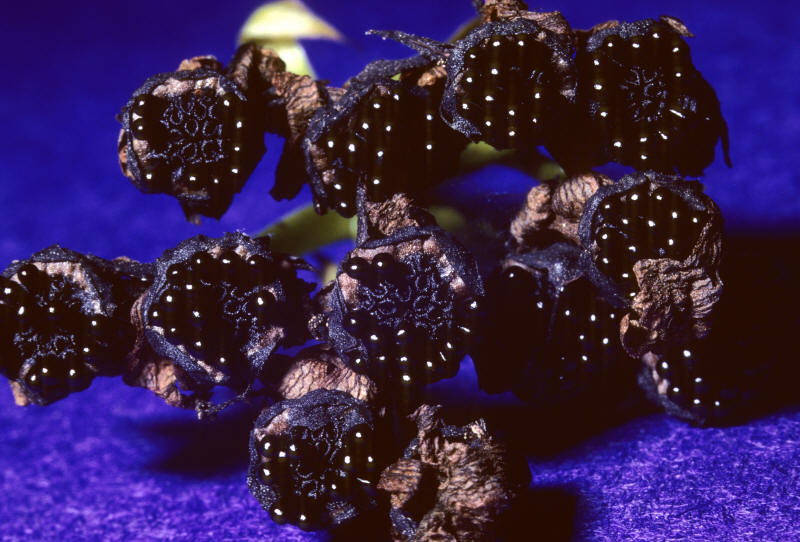| It's A Venus Fly Trap! |
|---|
| Sexual Reproduction Dionaea muscipula are protandrous organisms, which encourages cross-fertilization because they are monoecious. However, they may also self-pollinate. The anther becomes covered in rough, granular pollen. When the
stigma is ready to receive the pollen, it divides into five sections.
The pollen lands on the stigma and generates. The tube nucleus
forms the pollen tube as the sperm nuclei trails down the tube.
When the nuclei reach the ovule, double
fertilization occurs. A seed begins to develop. The seed matures in 4-6 weeks after pollination occurred. As
the seed has matured, the ovary, sepals, and scape turn jet black (shown
on bottom left). Dionaea muscipula seeds are black, shiny
pear-shaped structures encased in its floral parts (shown below).
Each seed has 2 broad cotyledons (shown to the left).
The cotyledons (shown above) stay in contact with the endosperm for a long period of time, while the bodies grow to become green. The bodies then spread apart and become elongated. Next, the primary root develops root hairs.
Reproduction is more common through asexual reproduction. The rhizomes of the Venus Fly Trap extend horizontally in the soil and are able to generate a new bulb in which a new Venus Fly Trap emerges.
|


